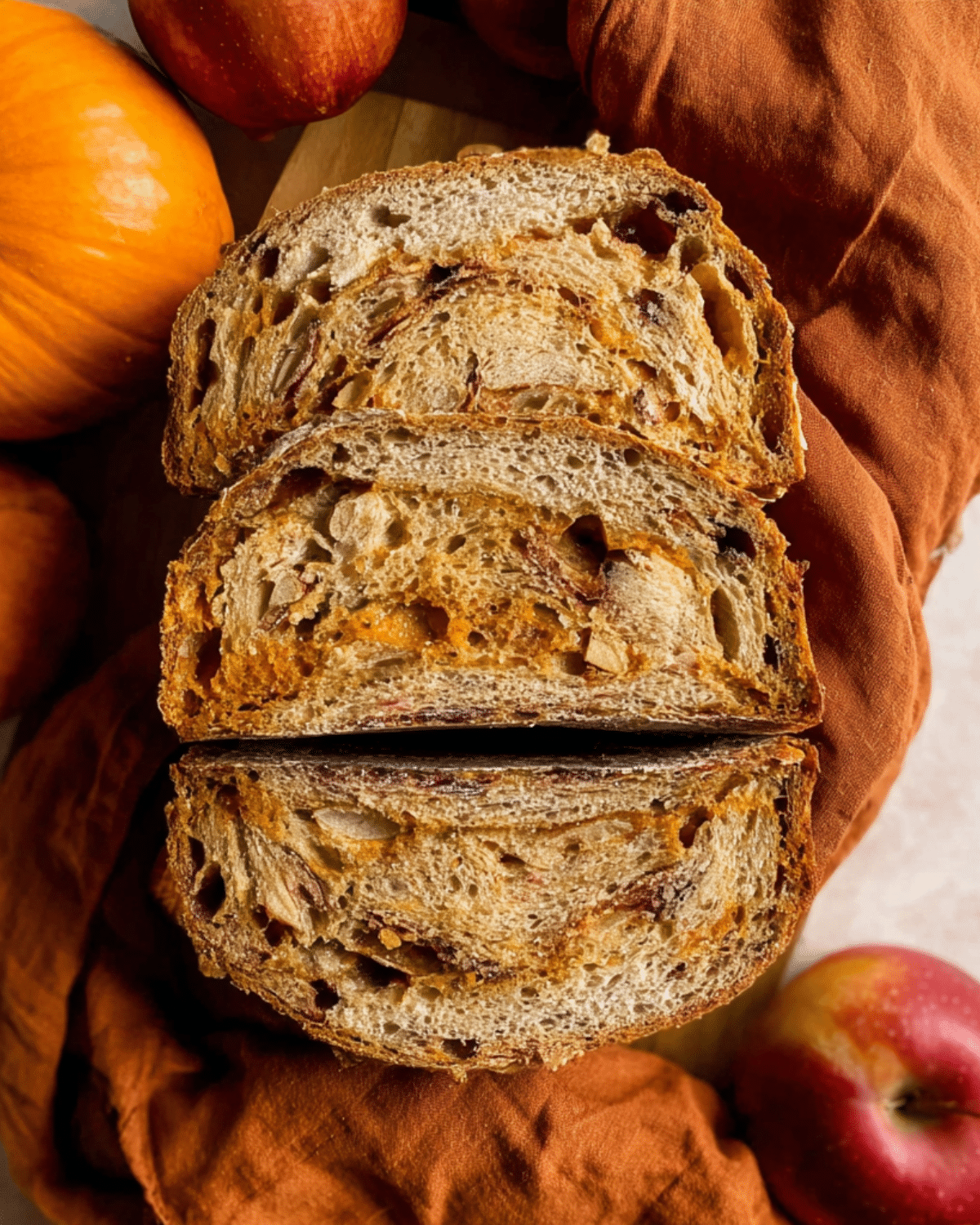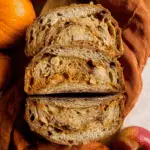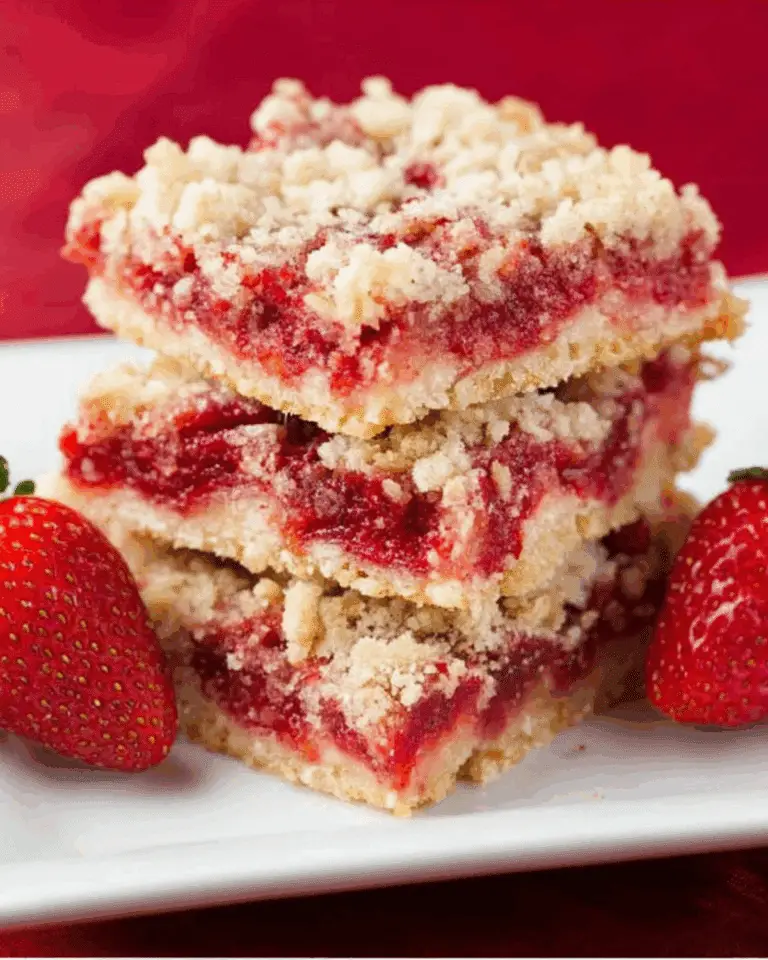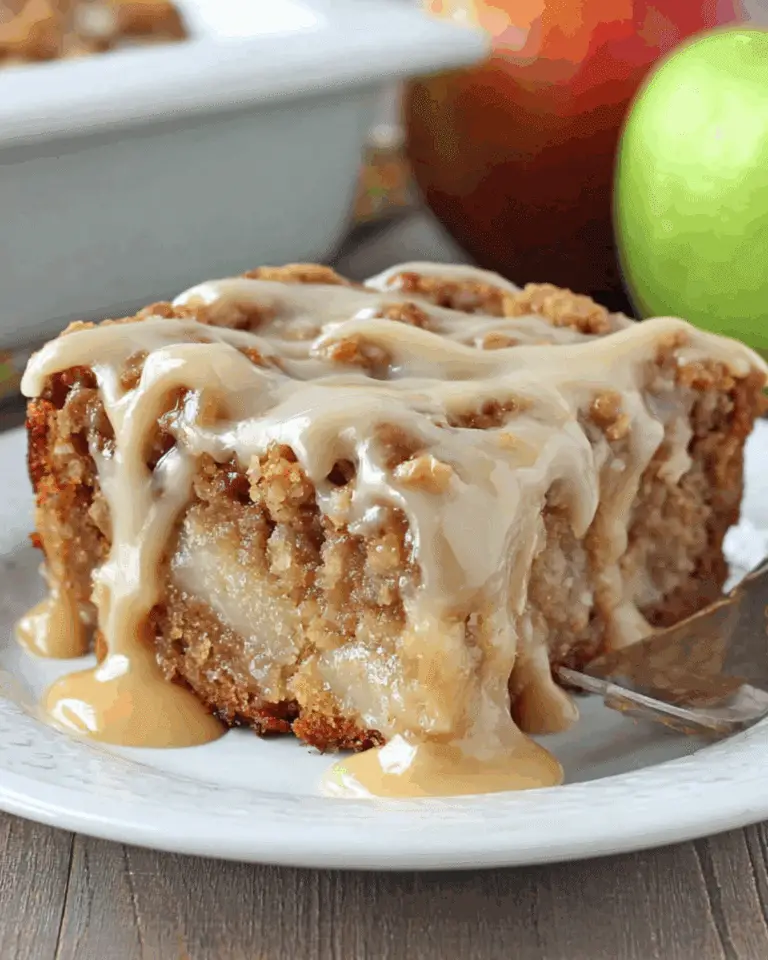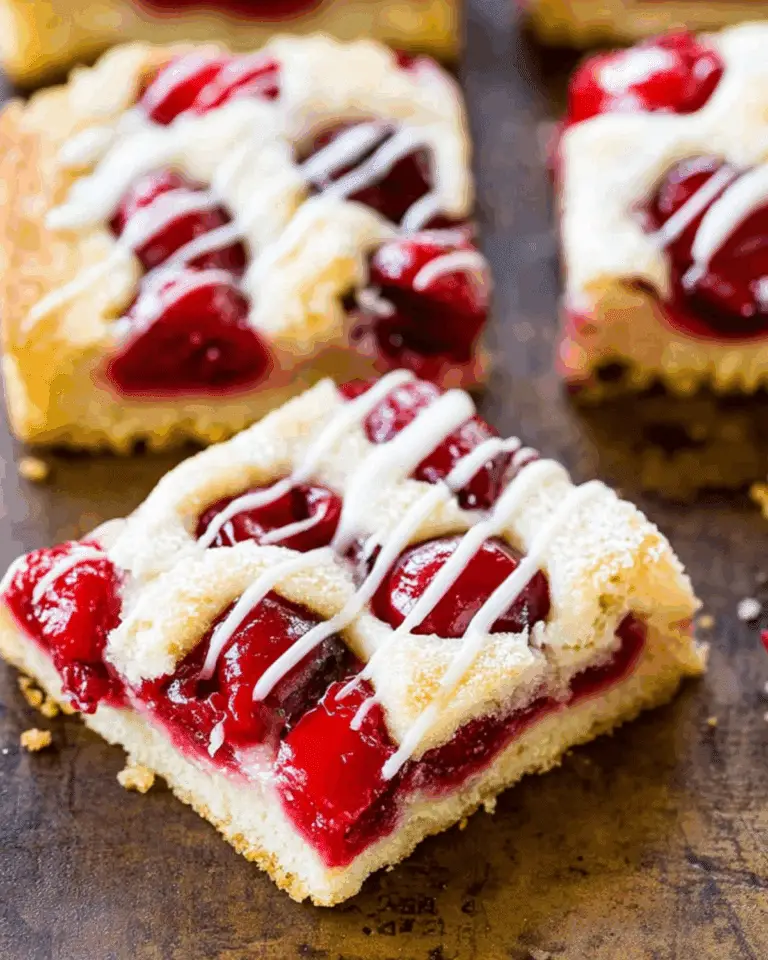Fall baking brings out the best in every kitchen — cozy aromas, earthy spices, and nostalgic flavors. And if you’re craving something sweet, wholesome, and rustic, this Sourdough Pumpkin Apple Bread is just what you need. Packed with cinnamon-spiced apples, rich pumpkin puree, and the tang of natural sourdough, this loaf is a true celebration of the season.
Made with fermented dough and real ingredients, it’s a healthier spin on a traditional quick bread. Plus, it’s naturally leavened, so it skips the commercial yeast and delivers gut-friendly benefits.
Looking for inspiration? Try this hearty sweet potato cornbread for another fall favorite with bold flavor.
Let’s break down what makes this sourdough loaf a must-bake in your autumn kitchen.
JUMP TO
Table of Contents
Why You’ll Love This Sourdough Pumpkin Apple Bread
Fall Flavors in Every Bite
Every bite of this bread delivers cozy, fall-forward flavor. The warm pumpkin pairs perfectly with chunks of tart-sweet apple and hints of cinnamon, nutmeg, and clove. The crust has that rustic crunch we crave from sourdough, while the crumb inside stays moist and gently spiced. It’s the ideal loaf for pairing with morning coffee, afternoon tea, or an evening chai.
The Health Benefits of Sourdough, Pumpkin, and Apples
Sourdough isn’t just a trend — it’s a nutritional powerhouse. Thanks to its slow fermentation, sourdough makes grains easier to digest and nutrients more bioavailable. Combined with antioxidant-rich pumpkin and fiber-packed apples, this bread isn’t just tasty — it’s good for your body.
Don’t miss our easy spelt sourdough sandwich bread if you’re exploring more healthful options with fermented grains.
Naturally Sweetened and Wholesome Ingredients
Unlike commercial loaves loaded with refined sugar, this recipe uses just enough maple syrup or coconut sugar to enhance the natural sweetness of the apples and pumpkin. With whole wheat flour and clean ingredients, you can feel good about every slice.
Check out this healthy banana oat bread for another naturally sweetened bake that’s perfect for breakfast or snack time.
Ingredients for Sourdough Pumpkin Apple Bread
Crafting the best Sourdough Pumpkin Apple Bread starts with the right ingredients. From sourdough starter to seasonal fruit, every element plays a key role in the flavor, texture, and health benefits of this cozy autumn bake.
Must-Have Baking Staples
To get the right rise, structure, and crumb, you’ll need a few pantry essentials:
| Ingredient | Purpose |
|---|---|
| Active sourdough starter | Naturally leavens the bread and adds tang |
| All-purpose or bread flour | Provides gluten strength and volume |
| Pumpkin purée | Adds moisture, color, and subtle sweetness |
| Chopped apples | Brings a juicy bite and natural sugars |
| Maple syrup or coconut sugar | Natural sweetener that complements fall spices |
| Eggs | Help bind ingredients and create a tender crumb |
| Salt | Balances flavor and controls fermentation |
| Cinnamon, nutmeg, clove | Essential for warm, seasonal flavor |
| Chopped pecans or walnuts (optional) | For a crunchy, toasty finish |
If you need a good sourdough base, discover great ideas like this foolproof starter recipe that’s perfect for beginners and pros alike.
Choosing the Right Apples and Pumpkin
The type of apple you use can impact the final loaf. Firm, slightly tart varieties like Honeycrisp, Fuji, or Granny Smith work best—they hold their shape during baking and balance the pumpkin’s sweetness. You can peel them or leave the skin on for extra fiber.
As for pumpkin, go for unsweetened canned pumpkin purée (not pumpkin pie filling). If using fresh pumpkin, be sure to steam and mash it well to avoid a watery texture.
Optional Add-ins for Extra Flavor and Texture
Add-ins are a great way to elevate your sourdough pumpkin apple bread:
- Toasted pecans or walnuts for crunch
- Raisins or chopped dates for extra sweetness
- Pumpkin seeds sprinkled on top before baking
- A swirl of cream cheese filling for a decadent twist
- Rolled oats or seeds on the crust for texture and nutrition
Looking for a nut-free alternative? Check out this allergy-friendly carrot bread made with similar cozy spices.
With your ingredients prepped, you’re now ready to move on to the step-by-step method of making your sourdough pumpkin apple bread.
How to Make Sourdough Pumpkin Apple Bread at Home
Making this delicious Sourdough Pumpkin Apple Bread is easier than you might think. With a bit of prep and patience, you’ll be rewarded with a moist, flavorful loaf that captures everything we love about fall.
Preparing Your Sourdough Starter
Before you begin mixing, make sure your starter is active and bubbly. Feed your starter about 4 to 6 hours before mixing the dough, depending on your room temperature. It should double in size and pass the “float test”—a spoonful should float in water.
If your starter is sluggish or inactive, learn more about reviving it with these pro tips to avoid dense or gummy bread.
You’ll need about 100g of active sourdough starter for this recipe.
Mixing, Folding, and Incorporating Fillings
- Autolyse Phase:
In a large bowl, combine flour and pumpkin purée with water. Let the mixture rest for 30 minutes to hydrate the flour. - Mix and Add Starter:
Add your active sourdough starter and mix thoroughly until fully incorporated. - Add Sweetener, Spices, Salt, and Eggs:
Stir in maple syrup, cinnamon, nutmeg, clove, salt, and eggs. The dough will be sticky at this stage, which is normal. - Folding and Bulk Fermentation:
Over the next 4 hours, perform 3–4 stretch-and-folds at 30-minute intervals. After the second fold, gently incorporate chopped apples and optional pecans. - Rest and Rise:
After the final fold, cover the bowl and let it rest at room temperature until the dough has puffed up slightly—usually another 2–4 hours depending on ambient temperature.
Don’t miss our easy honey wheat sandwich bread for a simpler bake with no stretch-and-folds required.
Final Shaping, Proofing, and Baking Instructions
- Pre-shape and Rest:
Lightly flour your work surface, shape the dough into a round or oval, and let it rest uncovered for 20 minutes. - Final Shape and Cold Proof:
Tighten the shape and transfer it to a floured proofing basket. Cover and refrigerate overnight (8–12 hours). - Preheat and Bake:
Preheat your oven to 450°F (230°C) with a Dutch oven inside. Once ready, transfer the dough to parchment paper, score the top, and bake:- 20 minutes with lid on
- 20–25 minutes uncovered for a golden, crusty finish
- Cool Completely:
Let the bread cool on a wire rack for at least an hour before slicing. This step ensures a clean crumb and prevents gumminess.
Discover great ideas like this no-knead artisan sourdough if you’re looking for a more hands-off baking method.
Expert Tips for Perfect Texture and Flavor
Baking the perfect Sourdough Pumpkin Apple Bread takes more than just mixing ingredients—it’s about understanding dough behavior and fine-tuning your technique. These expert-approved tips will help you nail a moist crumb, flavorful crust, and balanced rise every time.
How to Fold in Fillings Without Tearing Dough
When adding chopped apples and nuts, be gentle. Add them during the second or third fold—not at the beginning—so the dough has enough strength to hold its structure. Spread the dough gently on a wet counter, sprinkle in the fillings, then perform a simple letter fold to tuck everything in.
Too much handling can cause gluten strands to tear, which may lead to flat or dense loaves.
Avoiding Soggy or Dense Bread
Pumpkin and apple both add a lot of moisture. Here’s how to manage it:
- Pat apples dry with a paper towel before mixing
- Don’t overdo the purée — stick to the recipe’s quantity
- Use strong flour like bread flour to help absorb excess moisture
- Cold proof the dough overnight for better rise and flavor balance
If your loaf is still too moist, try baking it 5–10 minutes longer with foil loosely tented over the top to prevent over-browning.
Looking for a naturally fluffy recipe? Don’t miss our easy yogurt sandwich bread for a pillowy soft result every time.
Room Temperature vs Fridge Fermentation
Both temperature stages affect texture and taste:
- Room Temp Fermentation (bulk stage): Boosts activity and allows dough to develop strength.
- Fridge Fermentation (proof stage): Slows everything down, enhances sour flavor, and helps create a more open crumb.
You’ll get a more complex flavor and easier scoring after an overnight cold proof in the fridge. If you’re in a rush, you can reduce fridge time to 4 hours, but the flavor won’t be as deep.
Learn more about bulk fermentation tips and timing if you’re ready to take your sourdough to the next level.
Variations You Can Try
What makes Sourdough Pumpkin Apple Bread so versatile is how easy it is to tweak. Whether you’re dealing with allergies, dietary restrictions, or just looking for a fresh take, these variations will help you adapt the recipe to suit your needs.
Gluten-Free or Egg-Free Swaps
If you’re avoiding gluten, use a trusted gluten-free sourdough starter and swap the flour with a blend designed for sourdough (rice flour, buckwheat, or sorghum blends work well). Keep in mind, gluten-free doughs are wetter and require a loaf pan for support.
For egg-free baking, try these swaps:
- 1 tbsp ground flax + 3 tbsp water (per egg)
- ¼ cup unsweetened applesauce
- Commercial egg replacers like Bob’s Red Mill
Each substitute works differently, so test what gives you the texture you like best.
Looking for allergen-friendly options? Check out this gluten-free seed bread with no eggs, dairy, or wheat.
Pumpkin Banana Sourdough Twist
Can’t choose between pumpkin bread and banana bread? Combine both for a naturally sweet and dense loaf. Swap half the pumpkin purée for mashed ripe banana. Reduce added sweetener slightly, as bananas bring their own sugars.
Spices like ginger or cardamom also blend beautifully into this variation. Throw in some dark chocolate chips for a dessert-like experience.
Discover great ideas like this moist banana chocolate chip loaf if you’re a fan of fruit-forward bakes.
Nut-Free or Seed-Filled Options
If you’re avoiding nuts due to allergies or personal preference, skip the pecans and swap in:
- Sunflower seeds
- Pumpkin seeds (pepitas)
- Toasted oats for extra crunch
- Dried cranberries for sweetness and chew
Topping the loaf with a sprinkle of seeds before baking not only adds texture but also makes for a beautiful rustic look.
Want more rustic bread ideas? Check out this artisan multigrain bread packed with texture, seeds, and whole grain goodness.
How to Store and Freeze Your Bread
One of the best parts about baking Sourdough Pumpkin Apple Bread is that it stores incredibly well. Whether you’re enjoying it over a few days or saving a loaf for later, these storage tips will help preserve its flavor, texture, and moisture.
Short-Term Counter and Fridge Storage
For up to 3 days, keep the loaf at room temperature:
- Wrap it in parchment or a clean kitchen towel to allow airflow while protecting the crust.
- Avoid sealing it in plastic, which traps moisture and softens the crust too quickly.
- Store in a bread box or paper bag for best texture.
If your home is especially warm or humid, refrigerate the bread in a sealed container for up to 5 days. Rewarm slices in a toaster or oven to bring back that just-baked taste.
Don’t miss our guide to keeping sourdough fresh if you’re struggling with staleness or sogginess.
Freezing for Long-Term Freshness
Want to make a batch and save some for later? Freezing is your best option.
- Let the loaf cool completely before slicing or wrapping
- Slice it first so you can pull out single pieces as needed
- Wrap in plastic wrap, then place in a zip-top freezer bag or airtight container
- Label with the date and freeze for up to 3 months
To thaw, leave slices at room temperature for 20–30 minutes, or reheat directly from frozen in the toaster or oven.
Pro Tip: If you plan to serve the bread later for guests, wrap the whole loaf tightly in foil and reheat in the oven at 300°F for 10–15 minutes.
Reheating Without Drying It Out
Avoid microwaving—it tends to dry out sourdough quickly. Instead:
- Use a toaster or toaster oven for individual slices
- Steam with foil in the oven to preserve moisture if reheating a full loaf
- Brush slices with a bit of melted butter or coconut oil for a bakery-style touch
This bread tastes just as good the next day, especially when lightly toasted and topped with cream cheese, nut butter, or even leftover roasted pumpkin spread.
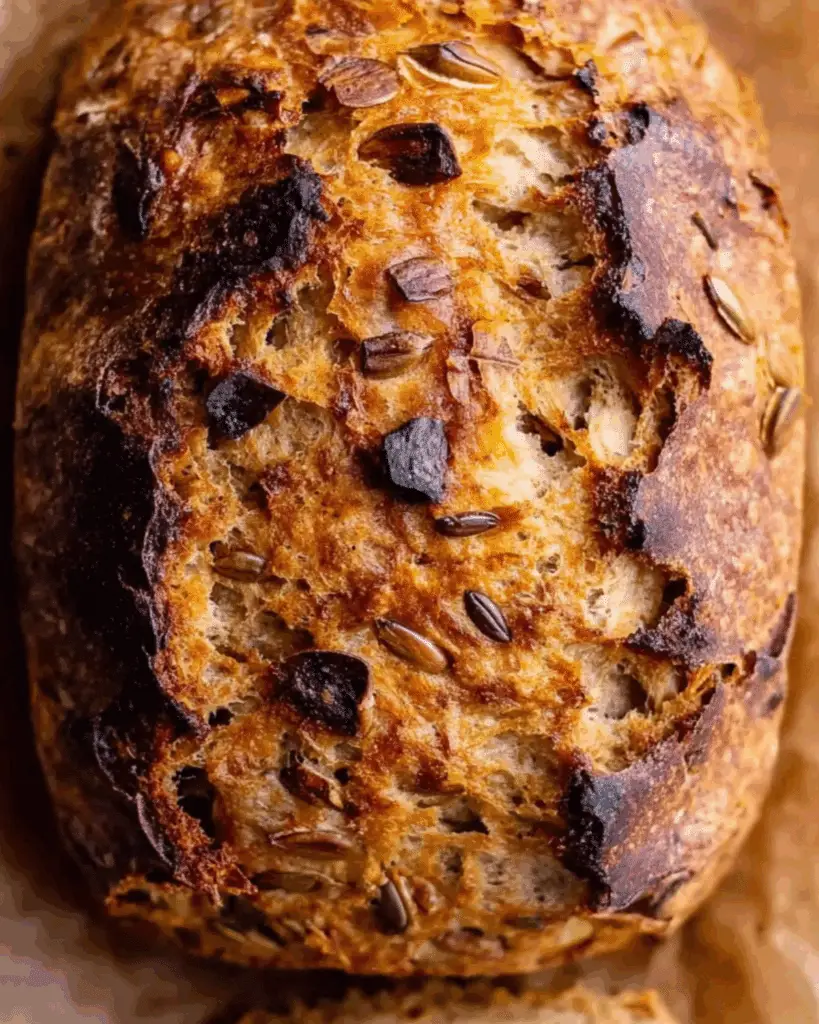
Frequently Asked Questions (FAQ)
Can I make this bread without sourdough starter?
Yes, you can substitute the sourdough starter with commercial yeast, but the flavor and texture will change. Use 1 packet (about 2¼ tsp) of instant yeast and reduce the fermentation times significantly. However, you’ll miss out on the signature tang and gut-friendly benefits of sourdough.
What type of apples are best for this recipe?
Firm, tart-sweet apples like Honeycrisp, Fuji, or Granny Smith are ideal. They hold their shape during baking and balance the richness of pumpkin. Softer apples tend to turn mushy and add too much moisture.
Can I use fresh pumpkin instead of canned?
Absolutely. Just make sure it’s cooked and mashed thoroughly. Steamed or roasted pumpkin tends to be drier and more flavorful than canned. Avoid using fresh pumpkin with high water content, as it can affect the dough consistency.
How do I know when the bread is fully baked?
The loaf should sound hollow when tapped on the bottom and reach an internal temperature of 200–205°F (93–96°C). A golden crust and slightly caramelized edges are also signs of doneness. Let it cool completely before slicing for best results.
Why is my sourdough bread not rising properly?
Several factors could be at play:
-Your starter may not be active enough
-The dough was under-fermented or over-proofed
-The environment was too cold for proper fermentation
-Incorrect flour-to-water ratio
Make sure your starter passes the float test and your fermentation timeline fits your kitchen temperature.
Final Thoughts on Baking This Autumn Favorite
Sourdough Pumpkin Apple Bread brings together the best of fall—warm spices, tender apples, and rich pumpkin—all inside a naturally leavened loaf that’s as wholesome as it is delicious. Whether you’re a seasoned sourdough baker or just dipping your toes into fermentation, this recipe offers a rewarding bake with big flavor and even bigger comfort.
The sourdough adds subtle tang, the apples offer bite, and the pumpkin gives a soft, moist crumb. Once you bake it, it’ll quickly become your favorite autumn tradition.
Looking for inspiration? Try Chocolate Chip Pumpkin Bread for another cozy bake to round out your fall recipe lineup.
PrintSourdough Pumpkin Apple Bread
This Sourdough Pumpkin Apple Bread is the ultimate fall loaf—moist, tangy, and spiced to perfection with cinnamon, nutmeg, and cloves. Made with real pumpkin, tart-sweet apples, and an active sourdough starter, it’s a healthier, naturally leavened bread ideal for breakfast, snacks, or cozy autumn treats.
- Prep Time: 30 minutes (plus 4 hours bulk fermentation)
- Cook Time: 45 minutes
- Total Time: 13–16 hours (including overnight proof)
- Yield: 1 large loaf
- Category: Bread
- Method: Baking
- Cuisine: American
- Diet: Vegetarian
Ingredients
- 100g active sourdough starter
- 400g all-purpose or bread flour
- 200g pumpkin purée
- 150g chopped apples (Honeycrisp, Fuji, or Granny Smith)
- 2 eggs
- 2 tbsp maple syrup or coconut sugar
- 1 tsp salt
- 1 tsp ground cinnamon
- 1/4 tsp ground nutmeg
- 1/4 tsp ground clove
- 50g chopped pecans or walnuts (optional)
- Water as needed (approx. 200–250g depending on flour)
Instructions
- Feed your sourdough starter 4–6 hours before mixing until active and bubbly.
- Mix flour, pumpkin purée, and water. Let it autolyse for 30 minutes.
- Add sourdough starter and mix until incorporated.
- Stir in maple syrup, spices, eggs, and salt.
- Over 4 hours, perform 3–4 stretch-and-folds. Add apples and optional pecans after the second fold.
- Let the dough rest covered at room temperature for 2–4 hours until slightly puffed.
- Pre-shape dough, let rest for 20 minutes, then do final shaping and place in a floured proofing basket.
- Cover and refrigerate overnight (8–12 hours) for cold proof.
- Preheat oven to 450°F (230°C) with Dutch oven inside.
- Transfer dough to parchment, score, and bake: 20 minutes covered, then 20–25 minutes uncovered.
- Cool on wire rack at least 1 hour before slicing.
Notes
- Use firm apples to prevent sogginess.
- Cold fermentation enhances flavor and makes scoring easier.
- Let bread cool fully before slicing to avoid gummy texture.
- Store at room temp for 3 days or freeze for up to 3 months.
- Test doneness with internal temp of 200–205°F.
Nutrition
- Serving Size: 1 slice (1/10 loaf)
- Calories: 180
- Sugar: 6g
- Sodium: 190mg
- Fat: 4g
- Saturated Fat: 0.5g
- Unsaturated Fat: 3g
- Trans Fat: 0g
- Carbohydrates: 32g
- Fiber: 3g
- Protein: 5g
- Cholesterol: 30mg

